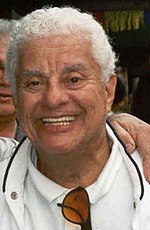Piano Sheets > Tito Puente Sheet Music > Oye Como Va (ver. 1) Piano Sheet
Oye Como Va (ver. 1) by Tito Puente - Piano Sheets and Free Sheet Music
About the Song
Other avaliable versions of this music sheet: Version 1 Version 2
"Oye Como Va" is a song written and composed by Latin jazz and mambo musician Tito Puente in 1963 and popularized by Santana's cover of the song in 1970 on their album Abraxas, helping to catapult Santana into stardom with the song reaching #13 on the Billboard Top 100.[1]
The song has the classic rhythm and tempo of cha-cha-cha. It has similarities with "Chanchullo" by Israel "Cachao" López. The Latin Beat Magazine writes, "Cachao's tumbaos for his 1937 composition of Resa Del Neleton (later changed to Chanchullo) inspired Tito Puente's signature tune 'Oye Como Va'."[3] On the original recording of the song the voice of Santitos Colon, the Puente orchestra singer at the time, can be heard in the song along with those of Puente and other orchestra musicians.
The song has numerous arrangements and remakes by numerous artists in various tempi. NPR included the song in its "NPR 100: The most.
Download this sheet!
About the Artist

Random article
Music sheets - what is all about? Back in the 19th century, songs in the United States were popularized by musicians through music sheets. It was only in the 1950s when musicians started to bring music sheets to bands so they could play, allowing more people to hear their compositions.
Simply, a music sheet is musical composition in printed form. It is composed of unbound sheets of paper where a musical notation of a song is printed. Many associate it with popular music. However, musicians say popular songs are not the only ones written down on paper. Many classical songs were published in music sheets and classical musicians performed even unfamiliar songs with these printed compositions.
(More...)
